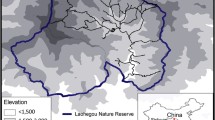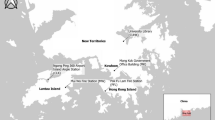Abstract
The short-eared owl (Asia flammeus), which lives in open wetland habitats, has been threatened and become endangered in South Korea due to the destruction and loss of its habitats. However, the diet of the short-eared owl remains to be studied. The prey of the short-eared owl was monitored using molecular methods as an alternative tool. A total of 121 pellets of the species were collected in the Dalsung wetland. Of these pellets, about 30% (n = 33) were selected for prey identification in 2002 (n = 12), 2003 (n = 6) and 2006 (n = 15). Two hundred and thirty-two bone fragments were successfully analyzed and 9 prey species were detected. In an expanded analysis, excluding 4 pellets used for the preliminary analysis, small mammals constituted the highest percentage (89.1%): 47.6% Eurasian field mouse (Apodemus agrarius); 27.2% European harvest mouse (Micromys minutus); 6.1% Japanese wild house mouse (Mus musculus); 5.4% Asian lesser white-toothed shrew (Crocidura shantungensis); and 2.7% Norway rat (Battus norvegicus). Not only small mammals, but birds and amphibians were also identified: 4.1% Japanese quail (Cotumix japonica); 3.4% vinous-throated parrotbill (Paradoxornis webbianus); 0.7% eastern turtle dove (Streptopelia orientalis); and 2.7% Kori salamander (Hynobius yangi). This result would be valuable in understanding the feeding ecology of the short-eared owl in its wetland habitats.
Similar content being viewed by others
References
Alvarez-Castaneda ST, Cardenas N andMendez L (2004) Analysis of mammal remains from owl pellets (Tyto alba), in a suburban area in Baja California. Journal of Arid Environments 59: 59–69.
Banks RC (1965) Some information from barn owl pellets. Auk 82: 506.
Clark DR andBunck CM (1991) Trends in North American small mammals found in common barn-owl (Tyto alba) dietary studies. Canadian Journal of Zoology 69: 3093–4002.
Clark RJ (1975) A field study on the short-eared owl, Asio flammeus (Pontoppidan) in North America. Wildlife Monographs 47: 1–67.
Hendrickson GO andSwan C (1938) Winter notes on the short-eared owl. Ecology 19: 584–588.
Holt DW andLeasure SM (1993) Short-eared owl (Asio fiammeus). In The Birds of North America, No. 62, A. Poole and F. Gill, eds., The Academy of Natural Sciences, Philadelphia, and The American Ornithologists’ Vnion, Washington DC.
Keppel G (1991)Design and Analysis: A Researcher’s Handbook. Prentice Hall, New Jersey.
Kim JB, Min MS andMatsui M (2003) A new species of lentic breeding Korean salamander of the GenusHynobius (Amphibia, Urodela). Zoological Science 20: 1163–1169.
Kocher TD, Thomas WK, Meyer A, Edwards SV, Pääbo S andVillabianca FX (1989) Dynamics of mitochondrial DNA evolution in animal: amplification and sequencing with conserved primer. Proceedings of the National Academy of Sciences of the United States of America 86: 6196–6200.
Lee SD (2003) Heavy metal accumulation of small mammals in Gumho river basin. Korean Journal of Environmental Biology 21: 257–261.
Lyman RL andLyman RJ (2003) Lessons from temporal variation in the mammalian faunas from two collections of owl pellets in Columbia County, Washington. International Journal of Osteoarchaeology 13: 150–156.
Ministry of Education (1967)Illustrated encyclopedia of fauna and flora of Korea. Vol. 7. Mammals.
Moreno E andBarbosa A (1992) Distribution patterns of small mammal fauna along gradients of latitude and elevation in Northern Spain. Zeitschrieft für Säugetierkunde 57: 169–175.
Mushtaq-UI-Hassan M, Ghazi RR andNisa N (2007) Food preference of the short-eared owl (Asio flammeus) and bam owl (Tyto alba) at Usta Muhammad, Baluchistan, Parkistan. Turkish Journal of Zoology 31: 91–94.
Orlando L, Leonard JA, Thenot A, Laudet V, Guerin C andHanni C (2003) Ancient DNA analysis reveals woolly rhino evolutionary relationships. Molecular Phylogenetics and Evolution 28: 485–499.
Pääbo S, Gifford AJ andWilson AC (1988) Mitochondrial DNA sequence from a 7000-year old brain. Nucleic Acids Research 16: 9775–9787.
Petty SJ (1999) Diet of tawny owls (Strix aluco) in relation to field vole (Microtus agrestis) abundance in a conifer forest in northern England. Journal of Zoology 248: 451–465.
Poulakakis N, Lymberakis P, Paragamian K andMylonas M (2005) Isolation and amplification of shrew DNA from barn owl pellets. Biological Journal of the Linnean Society 85: 331–340.
Rändle W andAusting R (1952) Ecological notes on long-eared and saw-whet Owls in southwestern Ohio. Ecology 33: 422–426.
Taberlet P andFumagalli L (1996) Owl pellets as a source of DNA for genetic studies of small mammals. Molecular Ecology 5: 301–305.
Torre I, Arrizabalaga A andFlaquer C (2004) Three methods for assessing richness and composition of small mammal communities. Journal of Mammalogy 85: 524–530.
Torre I, Telia JL andArrizabalaga A (1996) Environmental and geographic factors affecting the distribution of small mammals in an isolated Mediterranean mountain. Zeitschrieft für Säugetierkunde 61: 365–375.
Twente JW andBaker RH (1951) New records of mammals from Jalisco, Mexico from barn owl pellets. Journal of Mammalogy 32: 120–121.
Yang HF, Golenberg M andShoshani J (1996) Phylogenese resolution within the Elephantidae using fossil DNA sequence from the American mastodon (Mammut americanum) as an outgroup. Proceedings of the National Academy of Sciences of the United States of America 93: 1190–1194.
Author information
Authors and Affiliations
Corresponding author
Rights and permissions
About this article
Cite this article
Kim, MK., Kim, BJ., Lee, H. et al. Application of molecular methods to identify food resources of short-eared owl (Asio flammeus) in wetland community. Genes & Genomics 31, 421–427 (2009). https://doi.org/10.1007/BF03191855
Received:
Accepted:
Issue Date:
DOI: https://doi.org/10.1007/BF03191855




